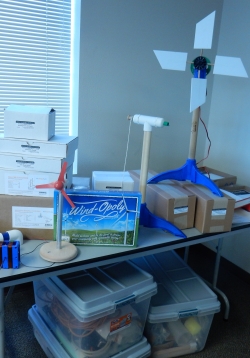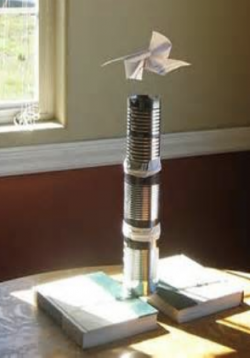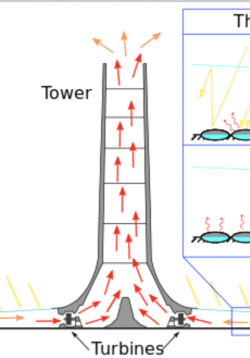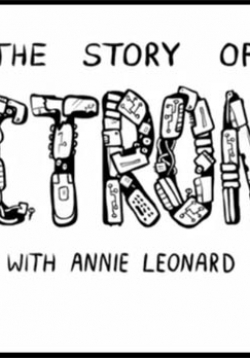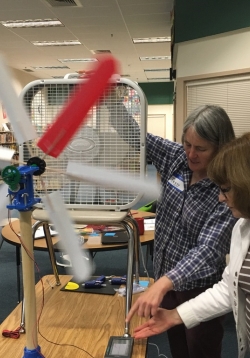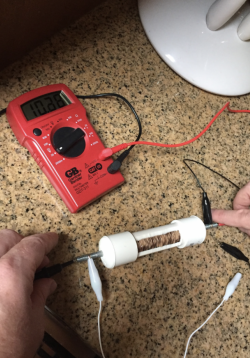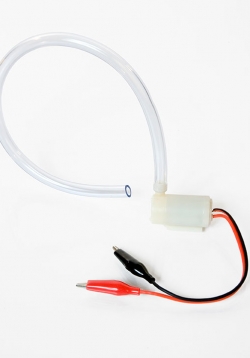Where Does Energy Go?
This lesson consists of six demonstration activities that show examples of ways in which water and air absorb heat to transfer energy from one place to another. These demonstration activities act as unique phenomena in which students can generate questions...
Wind Power: A Hands on Experience
This lesson challenges students to work in teams to design successful turbine blades for the “KidWind Firefly”. The firefly has an LED light that lights up when the students have designed turbine blades that spin effectively. This lesson provides students...
Let's Build Our Wind and Solar Energy Toy
Students will combine what they learned in previous lessons using their investigations of convection-related phenomena to design a device that will convert light energy from the sun into thermal energy and utilize the resulting convection currents. Their...
Learning About Solar Updraft Towers
This lesson helps students learn about solar updraft towers being planned and built around the world to help solve the energy crisis by using unlimited power from the sun. This will provide real world context to the engineering challenge they engaged in...
How might we design a battery that reduces e-waste? Phenomenon and Exploration
During this introduction lesson series students will explore the guiding phenomenon to understand e-waste and connect it to battery design. Students will utilize online resources to learn about problems from e-waste around the world and the environmental...
Exploring Eco-Friendly Battery Design
In this lesson students will experiment with everyday household items to make batteries. Students will use lemons, potatoes, pennies, and cola to make batteries, and compare the amount of voltage produced. These lessons can be expanded to test a variety of...
Engineering Clean Energy for Our Community
This lesson plan will engage students in a design process to power a motor using a variety of energy sources. Students will compare different clean energy sources to decide which energy source will complete their design goal. Students will experiment with...
Unit Plan: Understand E-Waste Through Battery Design
In this lesson students will further explore their understanding of energy, electricity, and basic circuits. Students will begin their exploration of batteries by questioning where batteries end up when we are done using them, making connections to e-waste...
Making Observations and Recording Data for Solar Powered Water Pumping
Students use a solar module and water pump to test how quickly one cup of water can be pumped.
Solar Powered Water Pumping
Students use a solar module and other materials in conjunction with a water pump to test how quickly one cup of water can be pumped.


